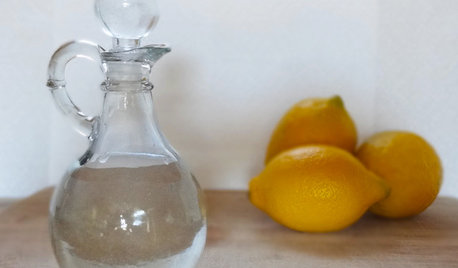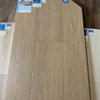What's difference between raw, natural, & organic petfood?
janawestward
15 years ago
Related Stories

MATERIALSRaw Materials Revealed: Drywall Basics
Learn about the different sizes and types of this construction material for walls, plus which kinds work best for which rooms
Full Story
INDUSTRIAL STYLEMy Houzz: From Raw Space to Hip Home in a Converted Utah Garage
Creative repurposing with an industrial edge defines the first home of an engaged couple in Salt Lake City
Full Story
KITCHEN DESIGNNew This Week: 4 Kitchens That Embrace Openness and Raw Materials
Exposed shelves, open floor plans and simple materials make these kitchens light and airy
Full Story
HOMES AROUND THE WORLDHouzz Tour: Open-Plan Design Makes All the Difference
The owners of a narrow cottage near Sydney revamp their home’s layout, adding flexibility and modernity on a budget
Full Story
EDIBLE GARDENSNatural Ways to Get Rid of Weeds in Your Garden
Use these techniques to help prevent the spread of weeds and to learn about your soil
Full Story
HOUSEKEEPINGVinegar and Voilà: Clean Your House the Natural Way
Ditch the commercial cleaners for nontoxic, inexpensive and versatile white vinegar
Full Story
HOUZZ TOURSMy Houzz: Natural Beauty and Art in the Adelaide Hills
With mud-brick walls, a view to vineyards and nature's tones and textures throughout, this revived home celebrates earthiness
Full Story
MATERIALSDesign Workshop: Natural Wood Siding Minus the Maintenance
No need to worry about upkeep when you choose wood that embraces weathering
Full Story
GARDENING GUIDES5 Ways to Naturally Win the Weed War
Show irksome weeds no mercy with these tricks for combating them sans chemicals
Full Story
Houzz Gifts: Set an Organic Glam Table
Sprinkle some glitz around natural pieces for a holiday table that's as festive as it is feel-good
Full StoryMore Discussions









Meghane
eat_organic1_gmail_com
Related Professionals
Savannah Furniture & Accessories · Topeka Furniture & Accessories · Maplewood Furniture & Accessories · Norwalk Furniture & Accessories · Graham Cabinets & Cabinetry · Murray Cabinets & Cabinetry · Newcastle Cabinets & Cabinetry · White Oak Cabinets & Cabinetry · Boca Raton Flooring Contractors · Chicago Flooring Contractors · Limerick Flooring Contractors · Little Rock Flooring Contractors · Saint Louis Park Flooring Contractors · Skokie Flooring Contractors · Wausau Flooring ContractorsGina_W
housefairy